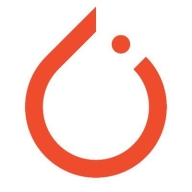

PyTorch and Hugging Face are both prominent in the AI and NLP sectors. While PyTorch is known for excelling in deep learning capabilities, Hugging Face often has the upper hand in NLP tasks due to its specialized tools.
Features: PyTorch offers a dynamic computation graph, a flexible neural network API, and strong community support. Its backward compatibility ensures code stability across versions. PyTorch’s interface aligns well with Python, making it user-friendly. Hugging Face is distinguished by its Transformers library, pre-trained models, and an open-source platform, enabling seamless integration of advanced NLP tasks.
Room for Improvement: PyTorch could improve in areas such as simplifying the initial learning curve for beginners and enhancing deployment to production environments. Greater resources and tutorials for niche use cases can aid its adoption. Hugging Face could benefit from reducing the complexity of managing model versions and providing more economical deployment options. Additionally, clearer documentation for beginners would be advantageous.
Ease of Deployment and Customer Service: PyTorch provides flexible deployment options with a community-driven support system that assists users in tailoring solutions to their needs. Its ecosystem is favored for research applications. Hugging Face excels with straightforward NLP deployment and responsive technical support, enhancing model integration into applications efficiently.
Pricing and ROI: PyTorch offers a cost-effective solution, appealing to budget-conscious organizations with a favorable ROI in general AI projects. Hugging Face may have higher initial costs, but its specialized NLP capabilities justify the investment by delivering significant ROI for advanced NLP tasks. PyTorch remains financially attractive, while Hugging Face’s offerings are valued for NLP-centric solutions.
| Product | Market Share (%) |
|---|---|
| Hugging Face | 11.4% |
| PyTorch | 3.5% |
| Other | 85.1% |


| Company Size | Count |
|---|---|
| Small Business | 8 |
| Midsize Enterprise | 2 |
| Large Enterprise | 3 |
| Company Size | Count |
|---|---|
| Small Business | 5 |
| Midsize Enterprise | 4 |
| Large Enterprise | 4 |
Hugging Face offers a platform hosting a wide range of models with efficient natural language processing tools. Known for its open-source nature, comprehensive documentation, and a variety of embedding models, it reduces costs and facilitates easy adoption.
Valued in the tech community for its ability to host diverse models, Hugging Face simplifies tasks in machine learning and artificial intelligence. Users find it easy to fine-tune large language models like LLaMA for custom data training, access a library of open-source models for tailored applications, and utilize options like the Inference API. The platform impresses with its free usage, popularity of trending models, and effective program management, although improvements could be made in security and documentation for more customizable deployments. Collaboration with ecosystem library providers and better model description details could boost its utility.
What are the key features of Hugging Face?Hugging Face is widely used across industries requiring machine learning solutions, such as creating SQL chatbots or data extraction tools. Organizations focus on fine-tuning language models to enhance business processes and remove reliance on proprietary systems. The platform supports innovative applications, including business-specific AI solutions, demonstrating its flexibility and adaptability.
We've built this course as an introduction to deep learning. Deep learning is a field of machine learning utilizing massive neural networks, massive datasets, and accelerated computing on GPUs. Many of the advancements we've seen in AI recently are due to the power of deep learning. This revolution is impacting a wide range of industries already with applications such as personal voice assistants, medical imaging, automated vehicles, video game AI, and more.
In this course, we'll be covering the concepts behind deep learning and how to build deep learning models using PyTorch. We've included a lot of hands-on exercises so by the end of the course, you'll be defining and training your own state-of-the-art deep learning models.
We monitor all AI Development Platforms reviews to prevent fraudulent reviews and keep review quality high. We do not post reviews by company employees or direct competitors. We validate each review for authenticity via cross-reference with LinkedIn, and personal follow-up with the reviewer when necessary.